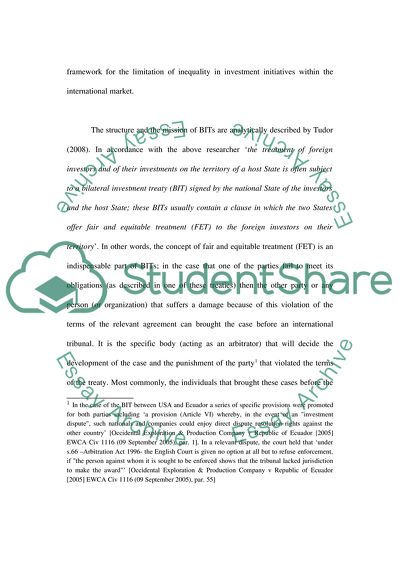Cite this document
(Fair And Equitable Treatment in Bilateral Investment Treaties Essay, n.d.)
Fair And Equitable Treatment in Bilateral Investment Treaties Essay. https://studentshare.org/finance-accounting/1713977-critically-assess-the-meaning-of-fair-and-equitable-treatment-in-bilateral-investment-treaties-bits-taking-into-account-the-recent-treaty-based-arbitration
Fair And Equitable Treatment in Bilateral Investment Treaties Essay. https://studentshare.org/finance-accounting/1713977-critically-assess-the-meaning-of-fair-and-equitable-treatment-in-bilateral-investment-treaties-bits-taking-into-account-the-recent-treaty-based-arbitration
(Fair And Equitable Treatment in Bilateral Investment Treaties Essay)
Fair And Equitable Treatment in Bilateral Investment Treaties Essay. https://studentshare.org/finance-accounting/1713977-critically-assess-the-meaning-of-fair-and-equitable-treatment-in-bilateral-investment-treaties-bits-taking-into-account-the-recent-treaty-based-arbitration.
Fair And Equitable Treatment in Bilateral Investment Treaties Essay. https://studentshare.org/finance-accounting/1713977-critically-assess-the-meaning-of-fair-and-equitable-treatment-in-bilateral-investment-treaties-bits-taking-into-account-the-recent-treaty-based-arbitration.
“Fair And Equitable Treatment in Bilateral Investment Treaties Essay”. https://studentshare.org/finance-accounting/1713977-critically-assess-the-meaning-of-fair-and-equitable-treatment-in-bilateral-investment-treaties-bits-taking-into-account-the-recent-treaty-based-arbitration.


